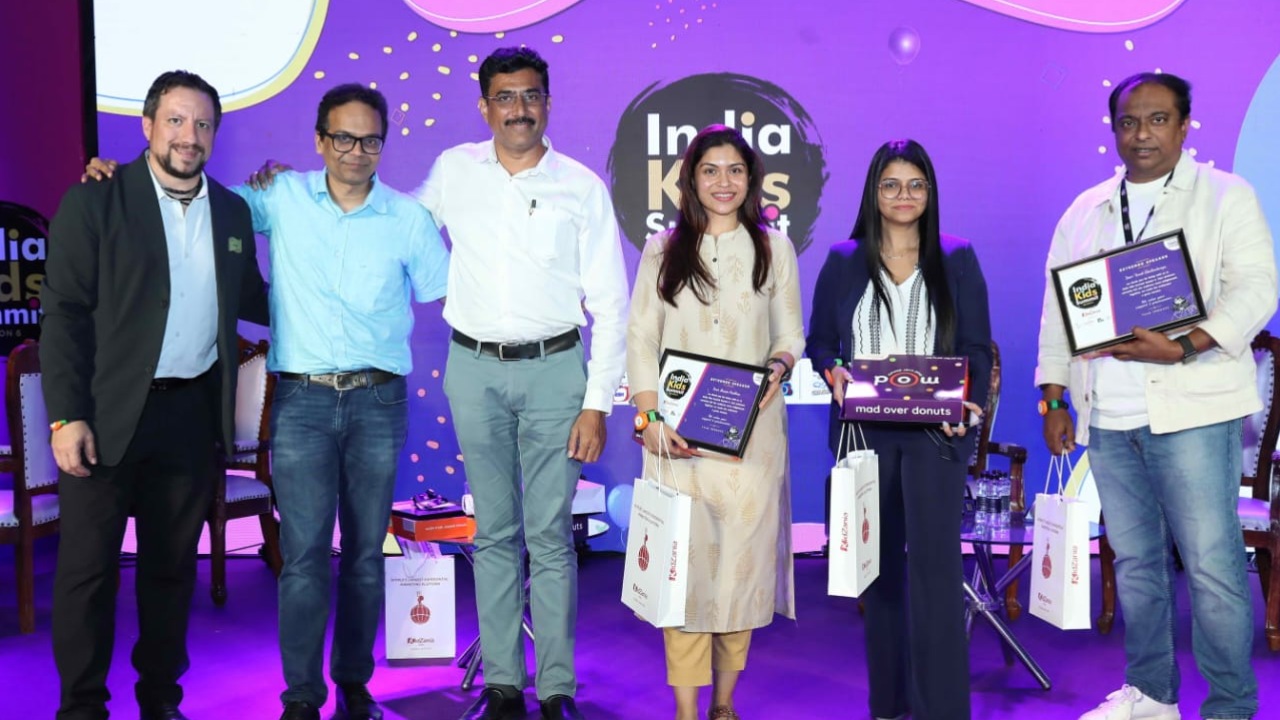The 6th edition of the India Kids Summit brought together some of the most esteemed industry panel experts to engage in interesting conversations which ranged from talking about the markets that cater around kids, the content they consume and much more, empowering the youth, brands and much more.
One of the burning topics for the same that was discussed was Luring Customers: New Marketing Strategies to Lookout for. Mr. Ron Crasto, Founder, Redfox Media Corp, moderated the session with Mr. Tarak Bhattacharya, Executive Director & CEO, Mad Over Donuts, Ms. Sonam Pradhan, Head Media & Digital Marketing, South Asia, Kellanova, Mr. Prashant Patil, Co Founder, ORACURA, and Ms. Dipika Balkrishna Gavankar, Head of Marketing, Pressto India.
Excerpts from the conversation-
Ron: How do you sell to a generation that skips in less than 5 seconds? How do you engage and how do you make an impact?
Tarak: Firstly, you need to learn the Gen-Z language. Like when you do a good job you “slay.” Food is still the biggest thing we want, including kids. We don’t mind it. Whatever content we have planned is working for us, and we have managed to garner the audience.
Sonam: Attention is the new currency. The quicker you can get the message, the faster it will make an impact. We are talking to a generation who are very evolved. Unless there is a cause or purpose that connects with the Gen-Z, they are not going to be bothered. As Tarak rightly said, the language also needs to be catered to.
Dipika: My target audience is not really kids, but I understand the challenges. It is very difficult to approach kids where the content needs to be good and appropriate. For me, kids are just influencers in our flea shows like that for our product.
Prashant: If you consider ORACURA, there are two products – water flosser and electric toothbrush. The Gen-Z doesn’t have time. You don’t need jazz, and you just make your point as quick as you can, and they will buy the product if they are interested. Where we are facing a problem is in Tier-2 or Tier-3 cities where they have beliefs and hence don’t use it.
Ron: Now that evolution has happened, what’s the winning formula according to you? What is the ideal business plan to cater to kids?
Tarak: I don’t think there’s a set formula. Every day is revolving. How you as a brand evolve is important. We tried an AI filter that hooked on with the kids. What happens tomorrow, we don’t know… more personalisation will come up I guess, and we will adapt.
Sonam: I would like to add. We are Kellogg’s and we have a product called Chocos. We were having this survey with kids and their parents. We were surprised to see about how the kids were also evolved about nutrition and they know that it is beyond taste and sweetness. Today’s children are building up a story for their parents, and they know what they want.
Dipika: Kids these days know what they want with fashion also – what shoes, what clothes etc. They are totally savvy.
Ron: So, what I hear from you guys is there is no formula, but you can target kids based on what kids are following. How do you then target nostalgia or so?
Tarak: Characters and colors haven’t worked with us. It is just us maybe – when we tried with our blue color on a donut, it just didn’t work at all.
Sonam: I have a differential point. Nostalgia hits me in a different way. If I know Andaz Apna Apna is re-releasing, I am interested and excited. If you’re targeting an older audience with nostalgia, it will surely connect because they have core memories, and then the recall value is amazing. Six-year-old kids cannot have that as they are still creating those core memories.
Ron: With the songs being remixed and being chartbusters or not, is there something a marketer has to push and pull with this?
Prashant: If you talk about a specific nostalgia – for example, a mother talking about school days – kids are interested. Nostalgia can be connected with kids.
Ron: How do you reach out to a brand when the market is looking tepid or sad? How do you reach out to the audience?
Tarak: I sell food. It can never take over. AI will not come and feed you or eat for you. AI can tell me the other things and help me, but with food – in my case – it will only matter on human connect and emotions.
The panelists collectively emphasised that while there’s no single blueprint to capturing the attention of Gen-Z, there are guiding principles: authentic storytelling, understanding their language, offering immersive and engaging experiences, and staying agile with evolving trends. The kids’ market is dynamic, and brands that listen, adapt and innovate will always find a seat at the table.


